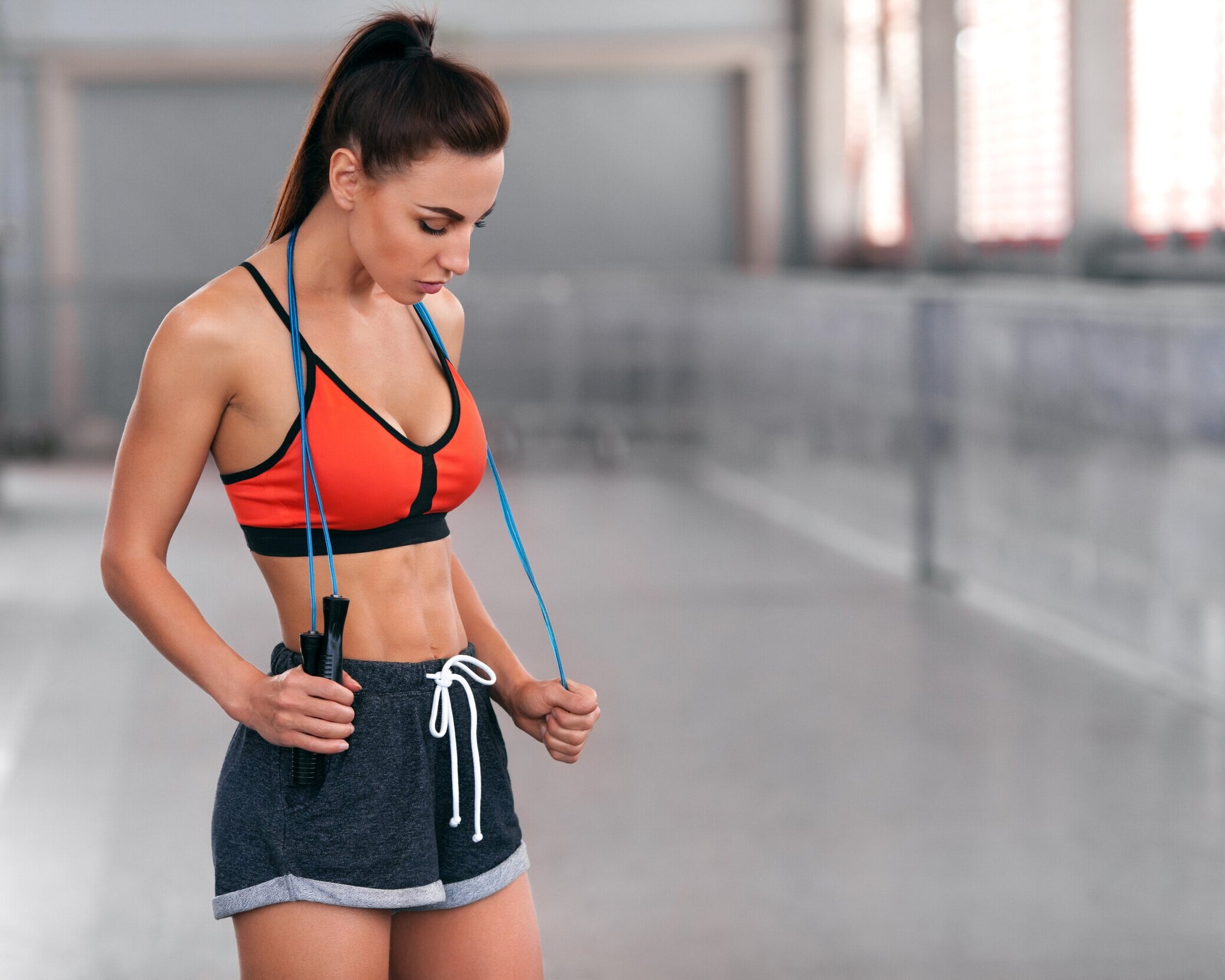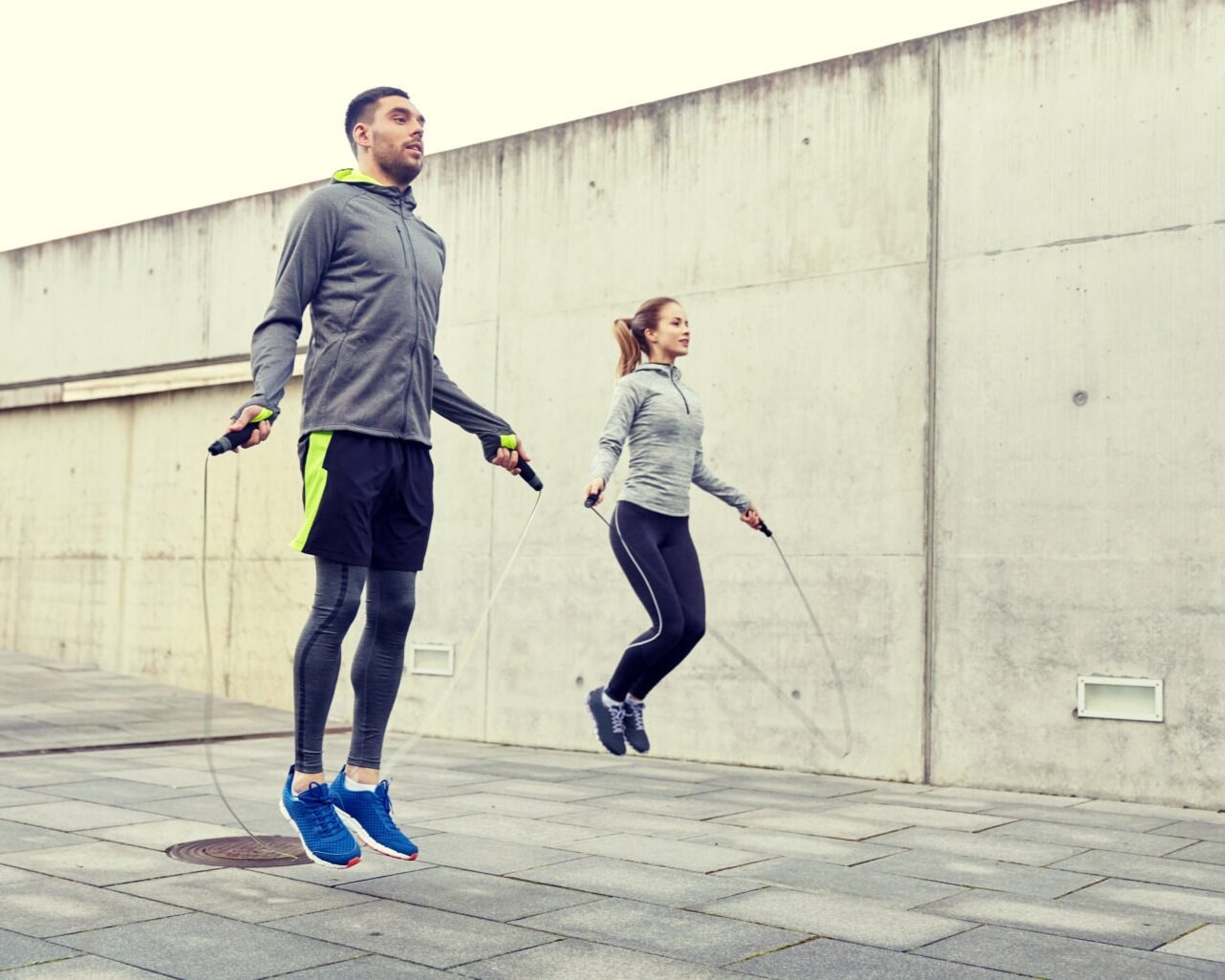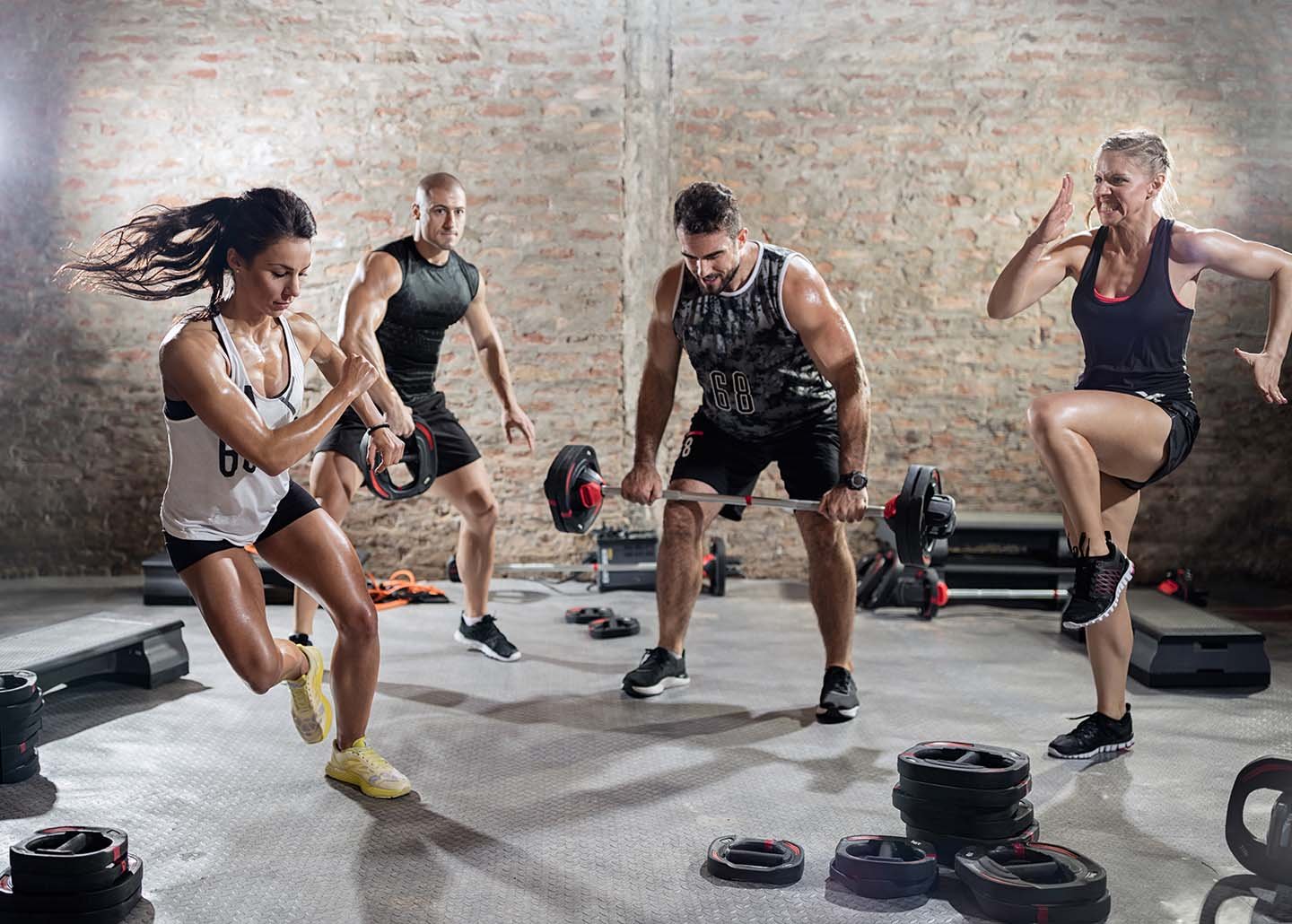7 benefits of jumping rope
7 benefits of jumping rope
The jump rope is the perfect training accessory. It is compact, affordable, and appropriate for all ages and levels of athlete training. You can jump rope at home, on the sports field, in the gym, or in the park. Just 10 - 15 minutes of jumping rope a day will help you improve your mood and fitness.
The jump rope is a great warm-up tool. Just 5-10 minutes will help warm up the muscles of the whole body.
Let's take a look at the main benefits of jumping rope.
Jumping rope strengthens the muscles.
On simulators, you work with only one muscle group. Jumping rope helps to pump the whole body, strengthening the muscles of the back, abs, front and back of the thigh. By combining jumps with turns and bends, you will work the oblique muscles of the abdomen that form the waist.
To make this exercise more effective, you can increase the height of the jump, or move your arms more actively, rotating the rope. Jumping on one leg and alternating leg crossing are also helpful.
Intense exercise reduces body fat, leaving the body firm and textured.
In one twenty-minute workout, you will perfectly work the muscles of the arms and legs and will be able to keep them in the right tone.
2. Jumping rope burns calories effectively.
It has been proven that vigorous jumping burns up to 130 kilocalories in 10 minutes, and in one hour you will lose about 800 calories. This load is comparable to jogging or vigorous cardiovascular exercise.
Jumping daily, combined with a sensible diet, can help you lose weight in just a month. Looking for more impressive results? Jump for 10-15 minutes 2-3 times a day!
3. You can practice jumping rope everywhere.
The rope is easy to roll up and put in your pocket or bag, and then go to the gym, to the park, or just into the street. You can jump rope both at the office and at home. The jump rope remains one of the most effective tools when you want to be in good shape.
4. Jumping rope - endurance training.
From an outside perspective, jumping rope may seem like child's play, but if you try to twist the rope for only 5 minutes, and you will understand that this is a rather difficult exercise. Not everyone can jump for 20 minutes without a break. You will have to start with a shorter time limit.
Add 5 minutes to your daily workout every week: the body will become more resilient, the heart rate will return to normal, and instead of fatigue, you will feel a surge of strength.
5. Jumping rope relieves psychological stress.
Any physical exercise stimulates the production of endorphins - hormones of happiness. Studies have shown that vigorous exercise raises body temperature and improves blood flow to the brain, relieving stress.
To increase your tone, exercise in the morning, if you feel a lack of energy during the day, then jump rope for another 5-10 minutes. Jumping is an effective and safe antidepressant that works for everyone.
6. Jumping rope improves the condition of your skin.
Jumping rope stimulates good blood flow. The skin receives the required amount of oxygen, becomes elastic and smooth, and acne and fine wrinkles disappear. After classes, a healthy complexion is guaranteed. Do not be afraid to sweat: together with moisture, toxins are removed from the pores.
Be sure to drink water after exercise: this will restore the hydro-lipid balance, improve metabolism, and have a positive effect on the beauty of the skin.
7. Jumping rope strengthens the cardiovascular system.
The jump rope is a wonderful pacemaker. It improves the functioning of the heart, strengthens blood vessels, and normalizes the functioning of the respiratory system. Regular jumping improves blood circulation. And by jumping for 15 minutes a day for 2-3 weeks, you can forget about shortness of breath.
If you have heart problems, be sure to see your doctor, and they will select the right exercise for you.
Who doesn't benefit from jumping rope?
Jumping rope is not helpful and can even harm people with the following health problems:
People with scoliosis, osteochondrosis, and joint diseases.
Women during pregnancy and during menstrual pause should not jump rope.
Since rope exercises increase pressure, be sure to consult with your doctor if you can handle such loads.
With headaches or migraines, there will be no benefit from jumping, the pain can only intensify.
Never jump on a full stomach.
People with obesity of 1 and 2 degrees, with heart disease and varicose veins, should only jump rope when a doctor permits it. This should not be taken lightly, as jumping is a strong load on the heart and blood vessels.
Basic rules for jumping rope
Do not jump with the rope barefoot, as this can damage your feet. It is better to train in sneakers.
Do not jump rope on a very hard floor (for example, do not jump on concrete), it is better to lay a rug under your feet. However, on a soft carpet, on an uneven surface (for example, on grass), you also should not jump.
Jumping rope should be done on two legs. Try not to land on your heel or your entire foot. Land better on the forefoot with the heel above the floor.
Correct jumps are soft and light, there is no need to land on the floor with a crash, as if something heavy fell.
Always keep your legs slightly bent at the knees, you do not need to straighten them and keep them in tension. Strive to make fast and high jumps without stopping. Easily and quickly, freely without stops and pauses - this is the result you need to achieve.
Women need to be sure to secure their breasts. Jumping rope can negatively affect the shape of your chest. Therefore, it is important to consider the appropriate support to wear during exercise.














